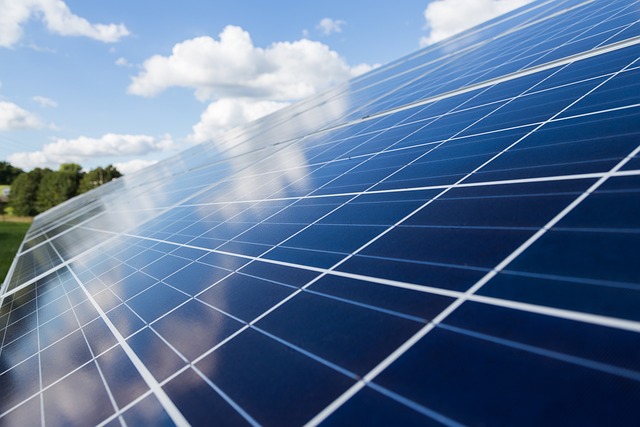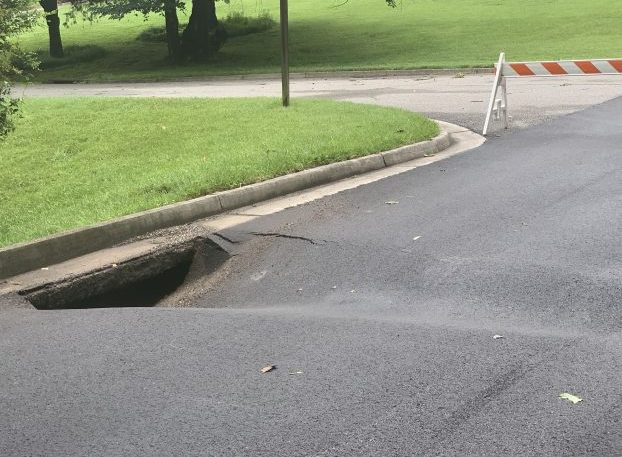What impact will federal changes have on regional solar projects?
Published 12:39 am Tuesday, July 15, 2025
After the “Big, Beautiful” federal budget bill passed earlier this month, multiple national news outlets started claiming it would cause delays in or completely shut down solar projects across the country. But while the bill does change some things for energy companies, officials with some of the different groups operating in this area say all current projects will still move forward.
Dominion Energy, for example, has a hand in a significant number of solar projects across all of the counties in our area. Company officials said they’ve seen the changes and none of them will affect the timetable for local projects. The concern here, for the most part, remains on what size of transmission line will be needed to transfer the energy produced.
“The (law) does not change our plans for projects already under development – or our overall approach,” said Tim Eberly. He serves as Dominion’s senior communications specialist. “We’ll continue doing what’s best for our customers to meet their needs reliably and affordably. Solar remains an important part of the all-of-the-above power mix. It saves our customers on fuel costs, and it’s one of the fastest ways to get more power generation on the grid to keep up with growing demand.”
What about the future for solar?
Trending
As mentioned earlier, some early national reports made it sound like companies would be pulling out of solar now that these federal changes are in place. In fact, it actually might provide an incentive to speed up some plans.
First off, let’s go over what the new federal law does not do. It does not put a new tax on solar. That has been included in some of the national reporting on this. To be clear, the Senate version of the bill did include a proposed “tax on renewable energy projects” that would have added a fee for each project that used materials brought in from other countries. That tax did not make it into the final version of the bill.
What the new law does do is speed up some deadlines. There is currently a 30% federal Investment Tax Credit (ITC) for residential solar installations. That was scheduled to go away in 2034. Now that will go away on Dec. 31, 2025. The projects have to be moving forward by the end of this year to qualify for the credit.
Also, solar and wind farms that flip on the switch and turn on after 2027 would not be eligible for the current federal business tax credits available for solar, with one exception. If the project starts construction within 12 months of this bill becoming law, it can still be eligible for the tax credits, even if it takes longer than two years to finish.
The law was signed on July 6. So if construction starts, even ground breaking, within a 12 month window, those tax credits are still available. But construction can’t last forever. In the new law, there is a maximum of four years allowed. In other words, if it starts construction by the end of 2025, it would have to finish by the end of 2029 to claim the full tax credit.
Will anything change?
We reached out to multiple companies planning or currently building solar projects in Prince Edward and Buckingham. While not all would comment on record, much like Dominion they did say nothing really changes as far as their long-term plans. Instead, several projects are just waiting on our regional transmission authority to render a decision.
Trending
In December 2024, this region’s electricity transmission authority, PJM, released a report stating that Dominion Energy would need to change its plans in the region. Specifically, the report stated too many solar projects were planning to feed into one 115 KV transmission line, the line running from Chase City to Farmville. A kilovolt (kv) is one unit of electrical potential energy. Those projects, PJM officials wrote, would need to be placed on hold while a larger 230 KV transmission line is built.
Each grouping of states has what’s known as a regional transmission organization. They review construction plans, they study to make sure the infrastructure is in place to handle the energy being generated and that a developer isn’t trying to build something larger than possible. And then, if necessary, they hold up or order construction suspended, give requirements to companies, to make sure everything works. For Virginia and 12 other states in the Atlantic region, that group is PJM.
However, since that December announcement, a number of projects have been pulled off the schedule. As a result, PJM wants to take another look at the numbers. It’s possible, due to the removals, that the current 115 KV transmission line could work. That project is happening right now, with PJM officials telling The Herald that the results will be announced in August.
What would a delay mean for solar?
Now this, more than any federal changes, will determine if projects get delayed. If PJM decides the current transmission line isn’t enough, then Dominion will be required to build that larger 230 KV line. That would take years, Eberly explained. Specifically, it would take between 42 to 48 months, so up to four years.
If PJM says construction is needed in August, Dominion would immediately move forward. But that doesn’t mean construction. The 230 KV line hasn’t been designed yet, right-of-way hasn’t been purchased and so it would be much later, likely in 2026, before any construction started.
But all of that is contingent on PJM’s decision. So for the next few weeks, it’s time to just hurry up and wait.






